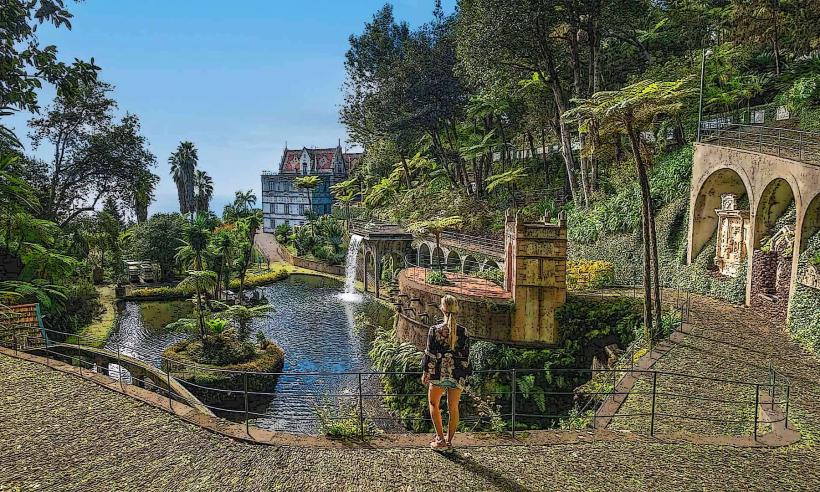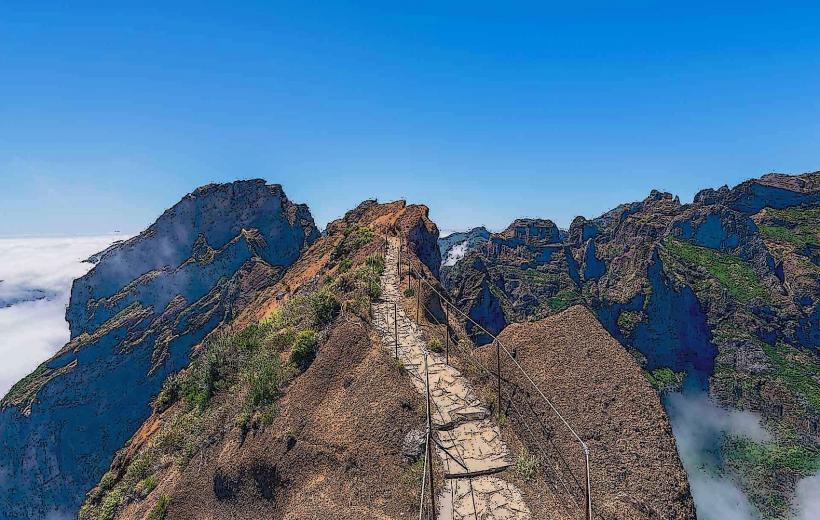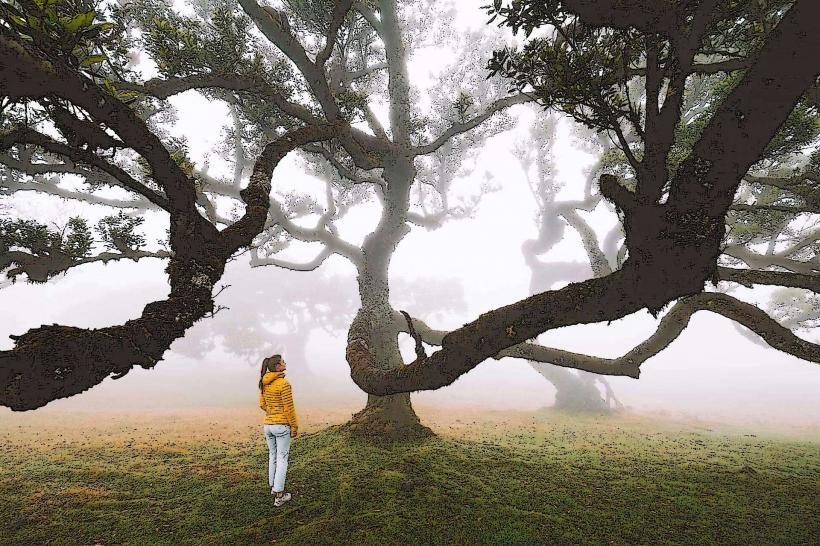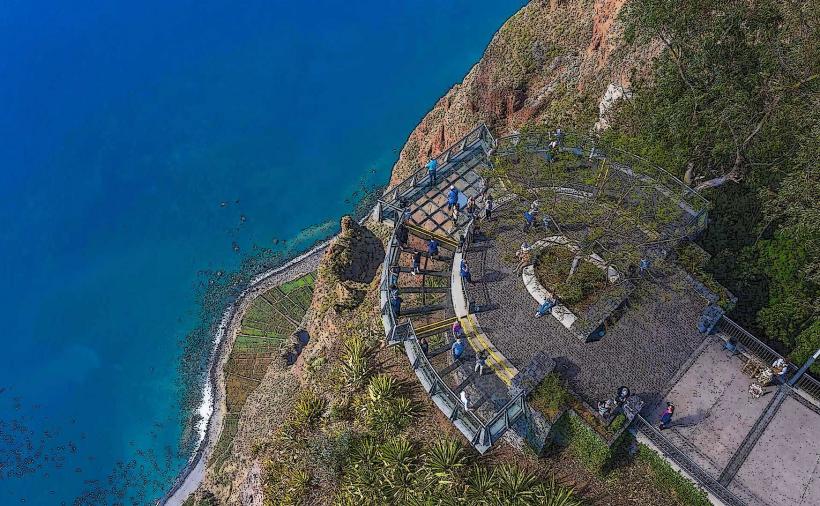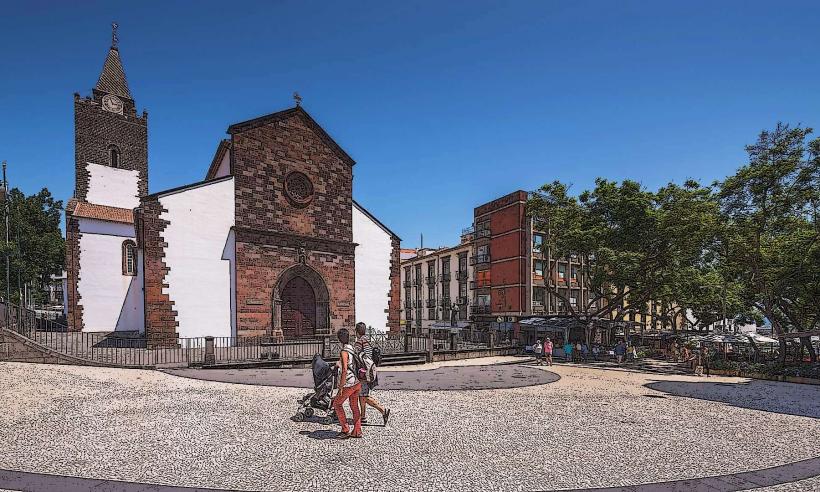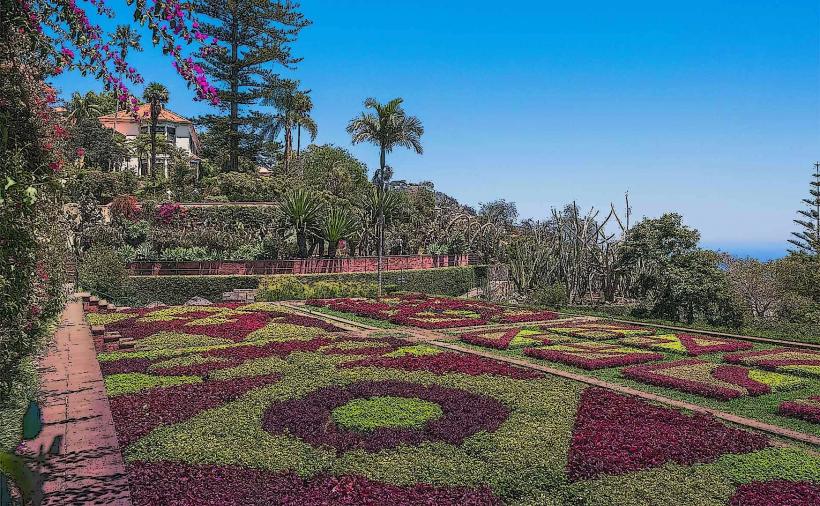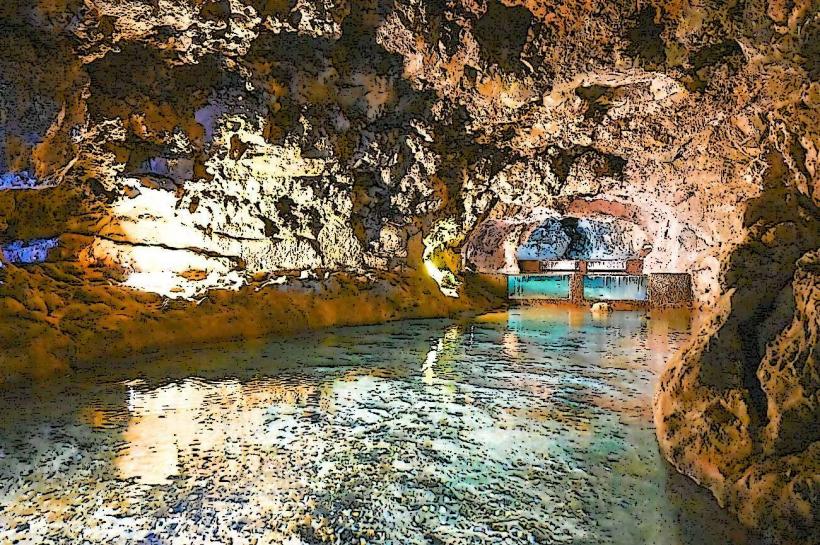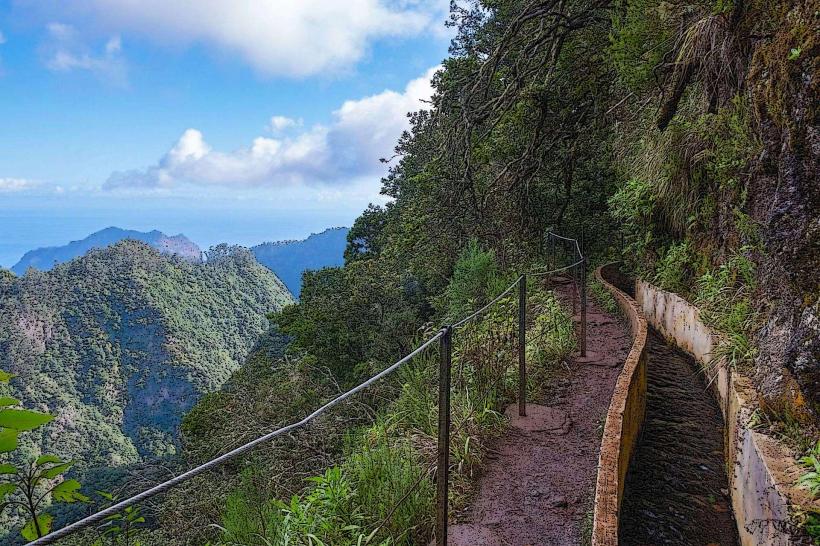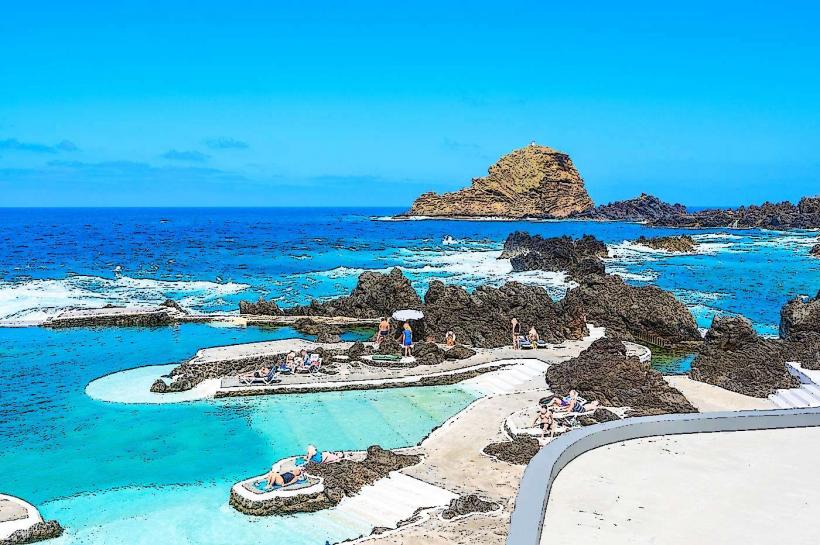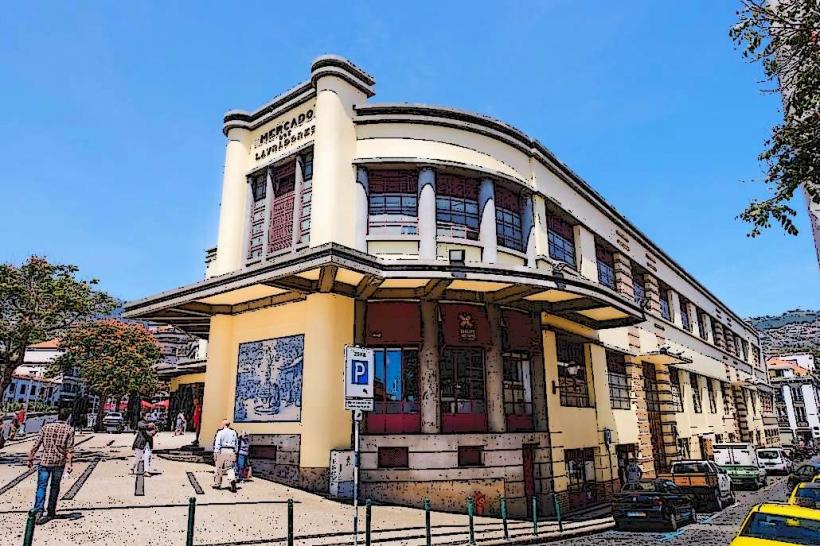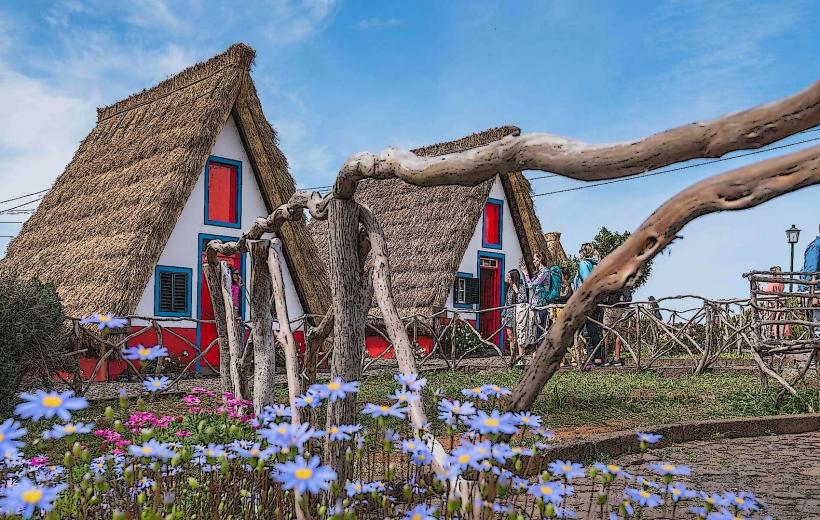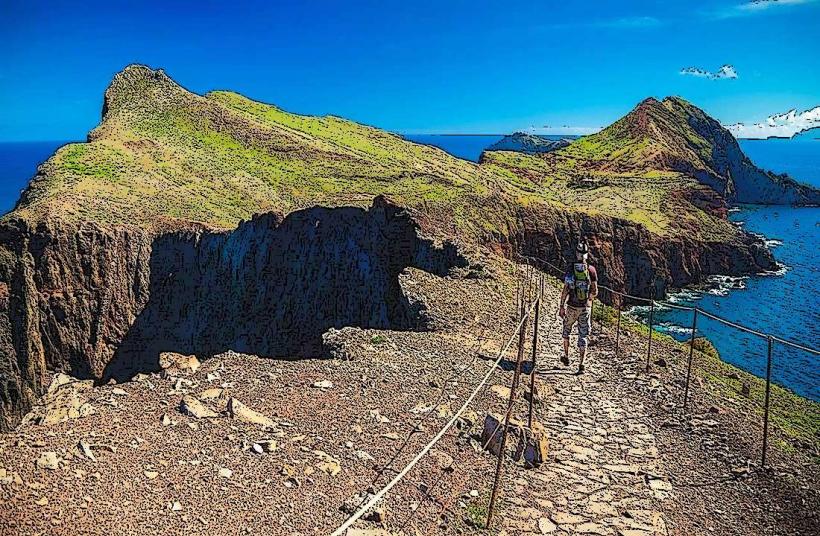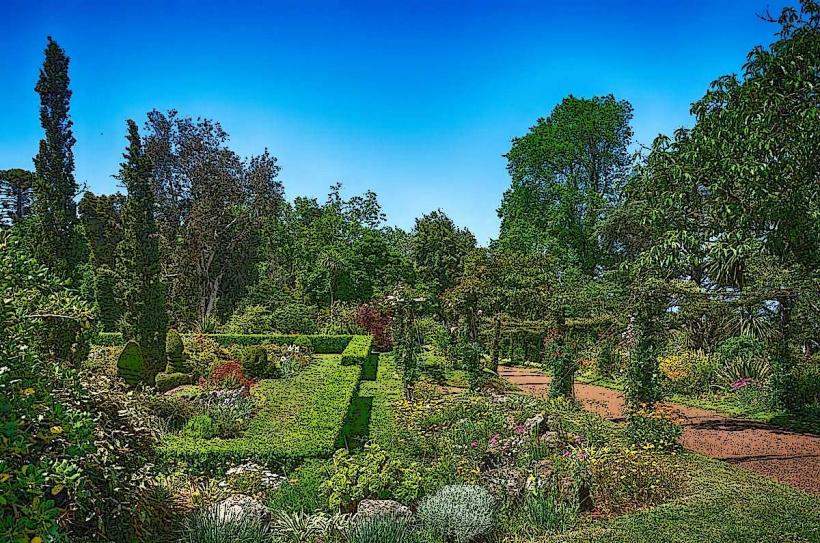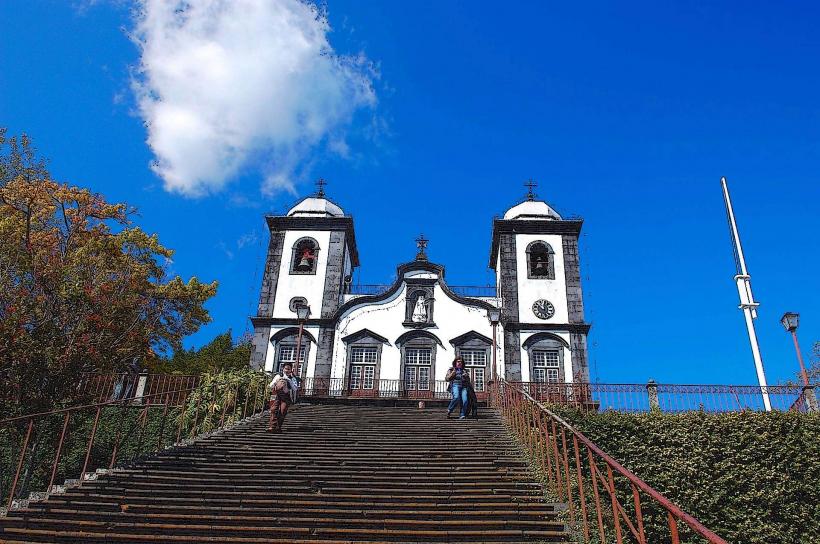Information
City: MadeiraCountry: Portugal
Continent: Europe
Madeira is a stunning archipelago located in the North Atlantic Ocean, about 1,000 kilometers (620 miles) southwest of Portugal’s mainland. Known for its lush landscapes, mild climate, and rich cultural heritage, Madeira is often referred to as the "Island of Eternal Spring" due to its year-round pleasant weather. The archipelago consists of several islands, with Madeira Island being the largest and most developed. Here’s an in-depth look at Madeira:
1. Geography and Landscape
- Volcanic Origins: Like the Azores, Madeira was formed by volcanic activity. The island is known for its rugged terrain, with steep cliffs, deep valleys, and dramatic mountains that rise from the ocean. Madeira's highest peak is Pico Ruivo, at 1,862 meters (6,112 feet), offering breathtaking views of the island.
- Botanical Gardens and Forests: Madeira is renowned for its lush vegetation and diverse flora, which thrive thanks to the island's temperate climate. The island is home to several botanical gardens, including the famous Madeira Botanical Garden in Funchal, the capital city. The Laurisilva forest, a UNESCO World Heritage site, is one of the last remnants of the ancient laurel forests that once covered much of Europe.
- Levada System: Madeira's famous Levada system of irrigation channels, which dates back to the 16th century, is one of the island's most distinctive features. The Levadas, some of which are over 200 kilometers long, have carved intricate pathways through the mountains, making them popular for hiking and providing breathtaking views.
2. Climate
- Mild and Temperate: Madeira enjoys a mild, temperate climate year-round, making it an attractive destination no matter the season. Summers are typically warm but not overly hot, with temperatures ranging between 20°C (68°F) and 25°C (77°F), while winters are cooler but still mild, with temperatures between 15°C (59°F) and 20°C (68°F). The weather varies across the island due to its varied topography, from sunny coastal areas to cooler, misty mountain regions.
- Rainfall: Madeira experiences moderate rainfall, especially in the mountains, where the weather can change rapidly. The island's subtropical climate supports a rich diversity of plant life.
3. Culture and Heritage
- Portuguese Influence: Madeira is an autonomous region of Portugal, and its culture reflects a blend of Portuguese traditions with local customs. The island's population speaks Portuguese, and its culture is strongly influenced by Catholicism, with numerous festivals throughout the year.
- Madeiran Traditions: Madeira has its own distinctive traditions, such as Festa de Nossa Senhora do Monte, a religious celebration held every August. The island is also known for its traditional Madeira embroidery, which is a fine craft involving delicate needlework, and its famous Madeira wine, a fortified wine that has been produced on the island for centuries.
- Music and Dance: The island’s music is influenced by Portuguese folk traditions, with instruments such as the madeiran guitar and the cavaquinho (a small string instrument) commonly used in performances. Traditional dances include the Bailinho da Madeira, a lively folk dance often performed during festivals.
4. Cuisine
- Madeira Wine: Madeira is most famous for its fortified wine, which has been produced on the island since the 15th century. The wine is made from a variety of grapes and is aged using a unique process involving heat and oxidation, giving it a distinct flavor. Madeira wine is typically enjoyed as an aperitif, dessert wine, or paired with food.
- Seafood and Meat: Madeira's cuisine is influenced by both the sea and the island’s agriculture. Espetada, a traditional Madeiran dish, consists of large chunks of beef marinated in herbs and grilled on skewers. Bacalhau (salted cod) is also a popular dish, as is scabbardfish, often served with banana, which is a unique and flavorful combination. Bolos do Caco, a traditional flatbread, is served with garlic butter and is commonly eaten with meals.
- Tropical Fruits: Madeira's subtropical climate also makes it ideal for growing exotic fruits, including bananas, papayas, passion fruit, and the famous Madeira pineapple, which is smaller but sweeter than the varieties found elsewhere.
5. Economy
- Tourism: Tourism is the largest sector of Madeira's economy. The island attracts visitors for its scenic landscapes, mild climate, hiking trails, and cultural events. Funchal, the capital, is a hub for tourists, offering attractions like the Madeira Botanical Garden, Monte Palace, and the historic center with its colonial-style architecture.
- Madeira Wine Industry: The production of Madeira wine is another important part of the island’s economy. The wine has a long history and remains a key export product. Wineries offer guided tours where visitors can learn about the wine-making process and sample different varieties.
- Agriculture: While tourism and wine are dominant, agriculture also plays a significant role. The island produces bananas, sugarcane, potatoes, and a variety of fruits. The Madeira pineapple, in particular, is highly prized for its sweetness and unique flavor.
6. Transportation
- International Airport: The main airport serving Madeira is Madeira Cristiano Ronaldo International Airport, located just outside Funchal. It connects the island to major cities in Portugal and Europe, with flights to destinations such as Lisbon, Porto, London, and Frankfurt. The airport is known for its dramatic location, perched on a cliff and with runways built on an artificial platform extending into the ocean.
- Public Transport: The island has a network of buses, taxis, and private transfers that make it easy to explore. However, the island's steep terrain and narrow roads can make driving challenging, so many visitors prefer to rent a car or take guided tours.
- Ferries: Ferries operate between Madeira and the nearby island of Porto Santo, known for its golden sandy beaches. However, travel between Madeira and other islands in the Atlantic is more limited by sea.
7. Tourist Activities
- Hiking and Outdoor Exploration: Madeira is famous for its hiking trails. The Levada walks are particularly popular, with several scenic paths that follow the historic irrigation channels through lush forests, offering spectacular views of mountains, valleys, and coastline. Some notable trails include the Levada do Caldeirão Verde and Levada dos 25 Fontes.
- Whale Watching and Diving: The surrounding waters of Madeira are home to diverse marine life, and the island is a popular destination for whale watching and diving. Visitors can spot sperm whales, pilot whales, and a variety of dolphin species. The island also has some excellent diving spots with clear waters and rich underwater ecosystems.
- Monte Palace and Botanical Gardens: The Monte Palace and the surrounding gardens are a must-visit for those interested in history, art, and botanical beauty. The palace is home to a variety of art collections, and the gardens provide fantastic views of Funchal and the coastline.
- Madeira Carnival: The Madeira Carnival, held every February, is one of the island's largest and most colorful celebrations. It includes parades, music, dancing, and traditional events, drawing crowds from around the world.
- Monte Toboggan Ride: One of the unique activities in Madeira is the Monte Toboggan Ride, where visitors take a thrilling ride down the hill in a wicker sled driven by two men dressed in traditional attire. The ride ends in Funchal, where the streets are lined with onlookers.
8. Local Identity
- Pride in Heritage: The people of Madeira take great pride in their unique cultural heritage, traditions, and natural beauty. The island's sense of community is strong, with local festivals and events bringing residents together to celebrate their history and way of life.
- A Legacy of Exploration: Madeira has a rich maritime history, and its geographical location made it a key stopping point for explorers and sailors during the Age of Discovery. The island is also associated with Prince Henry the Navigator, who is believed to have influenced its early exploration.
9. Conservation and Sustainability
- Environmental Preservation: The islands' unique flora and fauna are protected through various conservation efforts. The Laurisilva forest and other natural sites are safeguarded by both local and international regulations, ensuring that Madeira's natural beauty remains intact.
- Sustainable Tourism: Madeira is focused on promoting sustainable tourism practices to protect its environment and culture. This includes encouraging eco-friendly travel, reducing waste, and conserving the island's natural resources.
Summary
Madeira is an island paradise where natural beauty, rich cultural traditions, and mild weather come together to create a destination that caters to a wide range of interests. Whether you're exploring its volcanic landscapes, hiking through lush forests, savoring its famous wine and cuisine, or enjoying outdoor activities like whale watching and diving, Madeira offers a wealth of experiences. The island's unique charm, coupled with its history and warm hospitality, makes it one of Portugal's most enchanting destinations.

